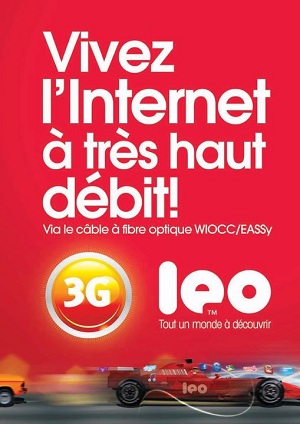3G competition in Burundi thanks to EASSy, WIOCC capacity
Burundi is an interesting case when it comes to Internet access. Although the nation has one of the lowest Internet (and Facebook) penetration rates in the world, it has 3G service available – from two operators, nonetheless. The to-date investment in 3G seems surprising when, according to the UN’s World Food Programme, only 28% percent of Burundians have enough food to eat.
However, the tens of millions of dollars needed to create broadband infrastructure begin to seem affordable given Burundi’s strong GDP growth over the past few years. Plus, the local telecoms regulator says there were more than 1.6 million mobile subscriptions in 2010, up substantially from the previous year. A mobile penetration rate of roughly 20% is set to double in a matter of years. With these facts in mind, the investment cost doesn’t seem so daunting. And, high-speed Internet access will strengthen and create e-health and e-government opportunities.
Edris Kisambira neatly anticipated Burundi’s Internet future in a May 2011 article published by Computerworld Uganda:
Burundi is currently laying a 1,300-km cable at a cost of $10.5 million, using a grant from the World Bank. The cable will cover key entry points — two on the Rwandan border and one on the Tanzanian side. The cable will also cover the capital, Bujumbura, and all the 17 provinces…The cable is also expected to reduce the cost of Internet access by more than 70 percent.”
Well, the cable connecting Bujumbura to the Burundi-Tanzania border (which then connects with the EASSy undersea cable landing at Dar es Salaam) appears operational. In July 2011, Econet, one of four licensed telecom operators in Burundi, began offering 3G mobile Internet in Bujumbura. Data was priced as low as 53-BIF ($0.04 USD) per megabyte.
Last month (October 2011), U-com launched a 3G service under the subsidiary leo™. Thanks to Burundi’s membership in WIOCC and the aforementioned cable connecting Burundi and Tanzania, the cell towers are able to connect to the EASSy fibre cable in Dar es Salaam. More than 50 3G sites across a handful of Burundian cities were to be active by the end of the month. According to leo™’s Facebook page, 3G plans seem to start at $17 US per month, but an unlimited data plan seemingly costs $81 US per month. These are high prices, for sure, but at least there is 3G competition within the marketplace.
The promotional video for leo™ 3G strives to appeal to all types of urbanite: auto owner, businessman, young couple, and mother and child. Due to the lack of rural infrastructure (and high access costs) there is no need to market to rural areas. Only one grip with the video: the mother is using an Apple computer. You certainly don’t see one of those very often in Burundi.













 Twitter
Twitter Facebook
Facebook Pinterest
Pinterest
[…] but it is more expensive. Burundi even had multiple operators offering 3G as of November 2011 due to a World Bank investment and fibre connections to coastal East African […]